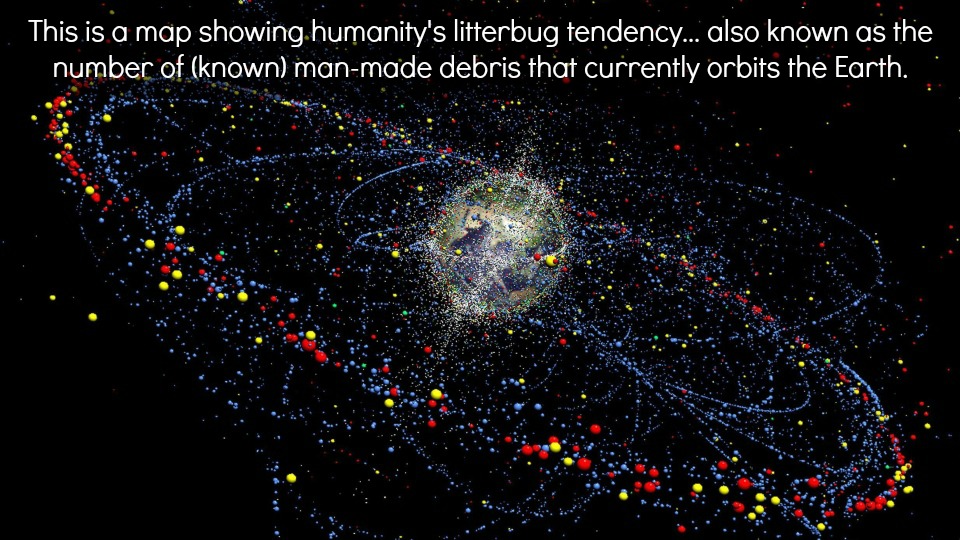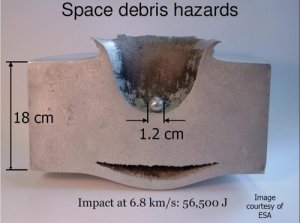

Image Credit: AP / TU Braunschweig
The problem with space debris isn’t that it’s just a problem of having all this trash floating around, or that it will have an environmental impact (since anything that re-enters the atmosphere typically disintegrates). The real problem with space debris is the speed of that debris, and the possibility that said debris will impact other (more valuable) objects in orbit. And we’re not talking about a fender-bender here; we’re talking about two rather fragile thousand-pound objects colliding at speeds of tens of thousands of miles an hour.
In the event that two objects impact one-another, the collision creates a massive debris cloud which is also traveling at thousands of miles an hour. Anything from stray solar panels to a screw could obliterate another spacecraft (imagine a screw traveling 20,000 miles an hour). That debris would then hit other objects in orbit, which creates more debris and hits more objects and….you get the picture.

This scenario is called Kessler Syndrome, after the NASA scientist Donald Kessler who first realized the problem back in the late 70’s. If enough objects collided in orbit, this would spell disaster for all orbital operations; this domino effect of collision and subsequent debris fields wouldn’t just devastate all current space operations, but would effectively eliminate the possibility of any future space operations (as anything else we would launch into orbit would be destroyed and create even more debris, thus making the problem even worse).
The bad news: orbital collisions have already occurred. The very first (accidental) collision took place in 2009 between two communication satellites, one from the U.S. and the other Russian. And a massive debris cloud was detected after the collision took place.
The reassuring news: currently we are able to track orbital debris and its trajectories, and can order spacecraft to alter course to avoid any possible collisions.
The scary news: currently we are tracking over 300,000 pieces of orbital debris that are 1 centimeter or larger.

The good (awesome) news: Many companies and government agencies are coming up with plans to deal with the problem, but a company that I’ve been particularly interested in and following lately has a plan and intends to follow through with it (and on the cheap). It’s not hard to get rid of it; you just have to slow it down enough so it re-enters the atmosphere and burns up. And the Swiss Space Systems (or S3), teamed up with École polytechnique fédérale de Lausanne (Swiss Federal Institute of Technology in Lausanne, or EPFL for short…more or less a government-funded Swiss version of CalTech or MIT) has a plan to do just that.
Take a look at the video to see what they have in mind.
And remember kids, always clean up your trash. You can’t even imagine who’s day you might be wrecking.